If you have damaged or missing teeth, restorative dentistry can be a lifesaver. However, one burning question often arises: Will my dental insurance help cover the cost? The answer, unfortunately, is not straightforward. The amount your insurance covers depends on several factors, including the type of restorative procedure needed, your specific insurance plan, and other variables.
In this article, you’ll learn about the different kinds of dental insurance plans and how much they typically cover for restorative work. We’ll explain exactly what restorative dentistry means, and give you tips on what to do if you need a lot of work done.
Think of it like this: Imagine your car breaks down. You need repairs to get back on the road safely. Your insurance plan might help pay for some of the fixes, but how much depends on the type of problem and the coverage you have. Dental insurance works in a similar way! The type of procedure you need and your specific plan impact how much your insurance will cover.
Let’s break down how coverage works for your smile, so you know what to expect and aren’t surprised by the costs.
Key Takeaways
- The amount your dental insurance covers depends on the type of procedure, your specific plan, and factors like deductibles and annual maximums.
- Restorative dentistry offers solutions for damaged or missing teeth, including fillings, crowns, bridges, dentures, and implants.
- If you need extensive restorative work, consider maximizing your insurance benefits, exploring financing options, or looking into dental savings plans.
- Understanding your Explanation of Benefits (EOB) statement is crucial for avoiding unexpected costs and ensuring your insurance coverage is applied correctly.
- Don’t hesitate to contact your insurance company if you have questions about your EOB or coverage details.
Factors that Influence Restorative Coverage
Insurance coverage for your teeth isn’t a one-size-fits-all situation. How much you pay depends on a few important factors:
- Type of Plan: Dental insurance often falls into two categories: HMOs and PPOs. HMOs usually have lower costs, but you might need to choose a dentist from a limited network. PPOs typically offer more flexibility in who you see, but the monthly fees might be higher.
- Specific Policy: Every dental insurance plan is different. Pay attention to things like deductibles (the amount you pay before insurance kicks in), coinsurance (the percentage you usually pay), and annual maximums (the total amount your insurance will cover per year).
- Waiting Periods: Some plans have waiting periods for major work, like crowns and implants. This means you might have to wait a set amount of time after purchasing your plan before getting those pricier procedures covered.
What is Restorative Dentistry?
Restorative dentistry focuses on repairing or replacing damaged or missing teeth, with the goal of restoring optimal function and appearance. Unlike preventative dentistry, which emphasizes maintenance checkups and cleanings, restorative procedures address specific issues that have compromised the health of your teeth.
Here are some common restorative procedures:
- Fillings: Address tooth decay (cavities) by removing the decayed portion and filling the space with restorative material.
- Crowns: Protect and stabilize weakened teeth, often used after root canals or significant tooth decay.
- Bridges: Replace a missing tooth or several consecutive teeth, anchored by the adjacent teeth.
- Dentures: Replace multiple or all missing teeth, offering full or partial solutions.
- Implants: Surgically implanted to securely replace missing tooth roots, providing a stable foundation for crowns or bridges.
Why is restorative dentistry important?
Compromised or missing teeth can significantly impact your oral health and well-being. Neglecting these issues can lead to difficulty chewing, impacting your nutrition and digestion. Tooth damage or decay might cause pain or discomfort, ranging from mild to severe. Missing teeth can even affect speech pronunciation.
Additionally, the remaining teeth may shift into gaps, altering your bite and increasing the risk of further problems. Left untreated, damage and gaps can increase susceptibility to infection, posing a risk beyond just your mouth.
Restorative dentistry addresses these issues, promoting long-term oral health and enhancing your quality of life.
What if I Need Extensive Restorative Work?
If you’ve neglected your teeth for a while or have multiple issues to address, the costs of restorative dentistry can feel overwhelming. However, there are ways to manage the expense and get the care you need. Here are a few strategies:
- Maximize Benefits: If you have dental insurance, make the most of it! Consider spreading major procedures strategically over calendar years to maximize your annual coverage limits.
- Financing Options: Many dental offices offer financing plans or work with third-party dental credit card companies. This allows you to break down larger costs into manageable monthly payments.
- Dental Savings Plans: These plans are an alternative to traditional insurance. For an annual fee, you gain access to a network of dentists offering discounted rates on various procedures. This might be a good option if your needs outweigh standard insurance benefits.
It’s important to compare your options carefully and talk to your dentist openly about payment plans or assistance they may offer. Don’t let financial anxiety keep you from a healthy smile!
Understanding Your Dental Insurance Statement
After a dental visit, you’ll likely receive an Explanation of Benefits (EOB) from your insurance company. This statement is essential for understanding your coverage and ensuring you don’t overpay for your dental care. Think of it like a detailed receipt – it outlines the services you received, how much your insurance covered, and what (if anything) you might owe your dentist.
Let’s break down the key components of an EOB:
- Procedure codes and descriptions: Each procedure you receive is assigned a specific code (like D0120 for a periodic exam or D2750 for a crown). This standardized coding system helps both your dentist and the insurance company track the treatment provided. A short description next to the code gives further clarity.
- Allowed amount vs. charged amount: The “allowed amount” is what your insurance company has negotiated as a reasonable price for that procedure in your area. Your dentist might charge more than the allowed amount, which means you could be responsible for the difference.
- Patient responsibility vs. insurance payment: This is the most crucial section! It plainly shows what your insurance covers, and what portion you’ll need to pay out-of-pocket. This includes amounts applied to your deductible (if any), coinsurance percentages, and copays.
Why is your EOB so important?
- Checking for errors: The EOB lets you verify you received the correct treatments and weren’t charged for something you didn’t have done. Mistakes happen, and it’s wise to cross-check.
- Preventing unexpected costs: By understanding your coverage and responsibility заранее, you can avoid unwelcome surprises when the final bill from your dentist arrives.
- Catching overcharging: If you notice the charged amount is significantly higher than the allowed amount, discussing this with both your dentist and insurance company is worthwhile. It’s possible your dentist’s fees are above the average, or an incorrect code was used.
Understanding your EOB gives you control over your healthcare costs. If you have questions about a specific EOB, don’t hesitate to contact your insurance company for clarification.
Your Smile, Your Choice: Taking Control of Your Dental Health
Understanding dental insurance and restorative options can seem daunting, but knowledge empowers you to make informed choices about your oral health. Prioritizing preventative care with regular checkups and cleanings can help minimize the need for extensive restorative procedures. Taking the time to understand your dental insurance plan’s specifics, including deductibles, coinsurance, and annual maximums, allows you to anticipate costs and plan accordingly.
Don’t be afraid to advocate for yourself. Communicate openly with your dentist, carefully review your Explanation of Benefits (EOB) statements, and contact your insurance company with any questions. If extensive restorative work is needed, explore different financing options, and potential dental savings plans, and compare estimates from various dental practices to find a cost-effective solution. By staying proactive and informed, you gain control and achieve the healthy, beautiful smile you deserve.
Need Help Understanding Your Dental Options? We’re Here for You!
Insurance details and choosing the right restorative treatments can feel overwhelming. At Soundview Family Dental, we believe everyone deserves a healthy smile, and we’re dedicated to helping you make informed decisions about your dental care. Whether you need a routine checkup, have questions about your insurance, or want to explore restorative options, our friendly and experienced team is ready to assist you.
Contact us today at (425) 563-6360 to schedule a consultation and experience the difference of personalized, compassionate dental care.


